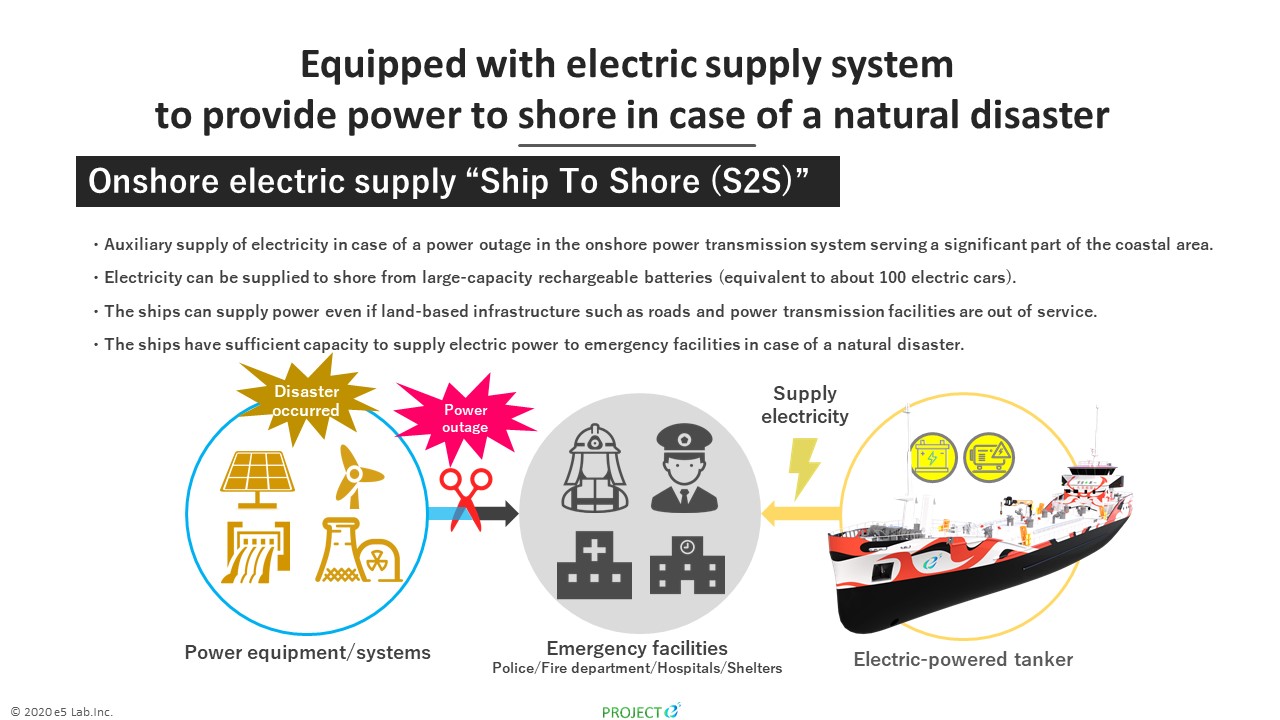
- Sustainable Planet -
- 5mins -
- 684 views
Turning the tide…World’s First All-Electric Tanker Ship Enters Service in Japan
The first of two 500 ton zero-emissions ‘bunker tankers’, powered entirely by large-capacity lithium-ion batteries, entered into service this month in Japan after several weeks of successful testing and demonstrations.
World’s First All Electric Bunker Tanker Enters Service in Japan
The world’s first electric-powered bunker tanker went into service on Tuesday 26 April 2022 in Japan after several weeks of testing and demonstrations. The 492 ton vessel is powered entirely by large-capacity lithium-ion batteries making it carbon-free in its operations. The vessel, Asahi operated by Asahi Tankers, is in commercial service but also is viewed as a demonstration ship contributing to the development of battery-powered vessels. — Maritime-Executive
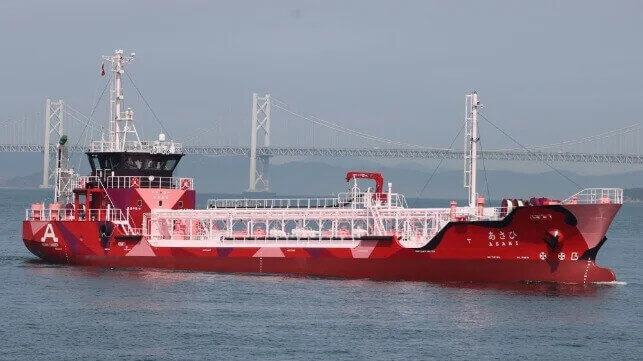
What is a bunker tanker?
According to MarineInsight, “Bunkering” is the supplying of fuel for use by ships including the logistics of loading and distributing the fuel among available shipboard tanks. A bunker tanker, or bunkering vessel, is a smaller tanker fitted with fuel pumps and a crane for hose handling, used for loading fuel oils into ship tanks. In this instance, the bunker tanker is also an oceangoing electrical power bank.
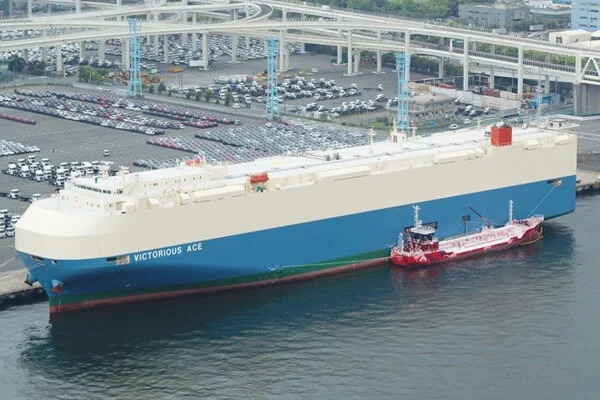
the tanker has a capacity to transport 1,277 cubic metres of liquid fuel
Designs for the bunker vessel were developed in cooperation with Japan’s e5 Lab as part of its effort to develop zero-emission ships and through the use of technology to improve the working environment aboard the vessel. It was launched in December 2021 by Japanese shipbuilder Koa Sangyo and delivered to its owners Asahi Tankers on 30 March.
Measuring 203 feet in length and with a 34 foot beam, the tanker has a capacity to transport 1,277 m3 of fuel providing bunkering operations in Tokyo Bay. On 26 April, the Asahi fueled the Mitsui O.S.K. Lines-operated car carrier Victorious Ace at the Daikoku Pier C-1 Wharf in Yokohama. According to the companies, this “marked a commemorative moment for the Asahi’s first bunkering operation.”
Source: Maritime-Executive.com
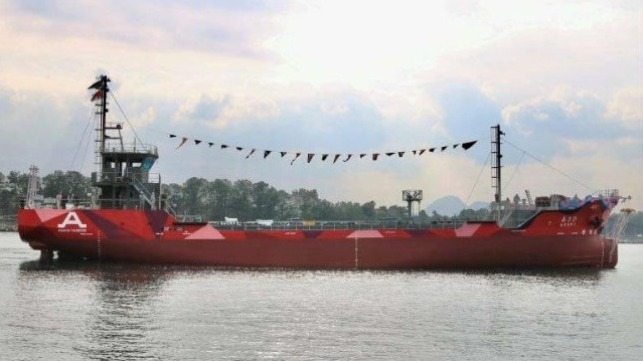
the Asahi can also serve as a source of power to provide support in emergencies or disasters
The power for the vessel is stored in a lithium-ion battery developed by Corvus Energy with the propulsion system built by Kawasaki. They reported that the battery has a capacity of 3,480 kWh providing all the power needed for navigation, berthing, and cargo handling.
The ship is propelled by two 300kw azimuth thrusters and also has two 68kw side thrusters. The tanker has an operating speed of about 10 knots and a range of approximately 100 miles. It will require about 10 hours to fully recharge the batteries.
Since the delivery at the end of March, the vessel has undergone power tests first at the shipyard and then at its newly built power plant in Kawasaki City.
The specially designed plant recharges the vessel. As part of the design developed by e5 and Kawasaki, the Asahi can also serve as a source of power designed to provide support in emergencies or natural disasters.
Source: Maritime-Executive.com
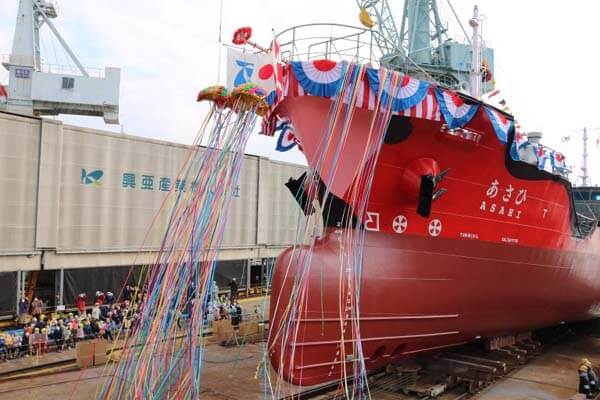
a second electric-powered bunker tanker is due for delivery in March 2023
The vessel drew large crowds of spectators along with industry officials who inspected her during her previews last week. In addition to the zero-emission operations, Asahi reports that the tanker provides a more comfortable work environment with less noise and vibration than traditional vessels. They also expect that there will be reduced requirements for engine maintenance.
Asahi has contracted for the construction of a second electric-powered bunker tanker. The vessel will be built at Zosen KK shipyard and is due for delivery in March 2023.
Source: Maritime-Executive.com
